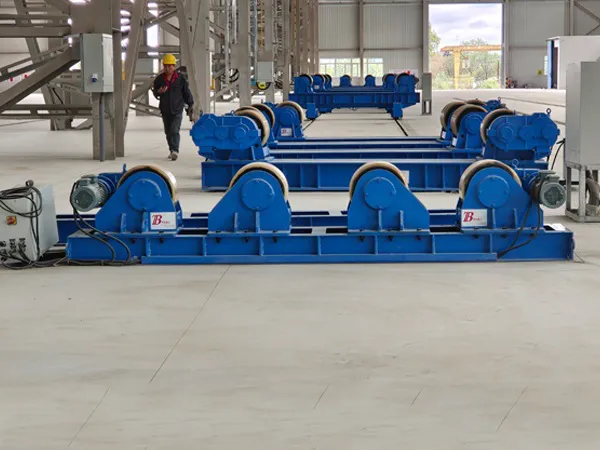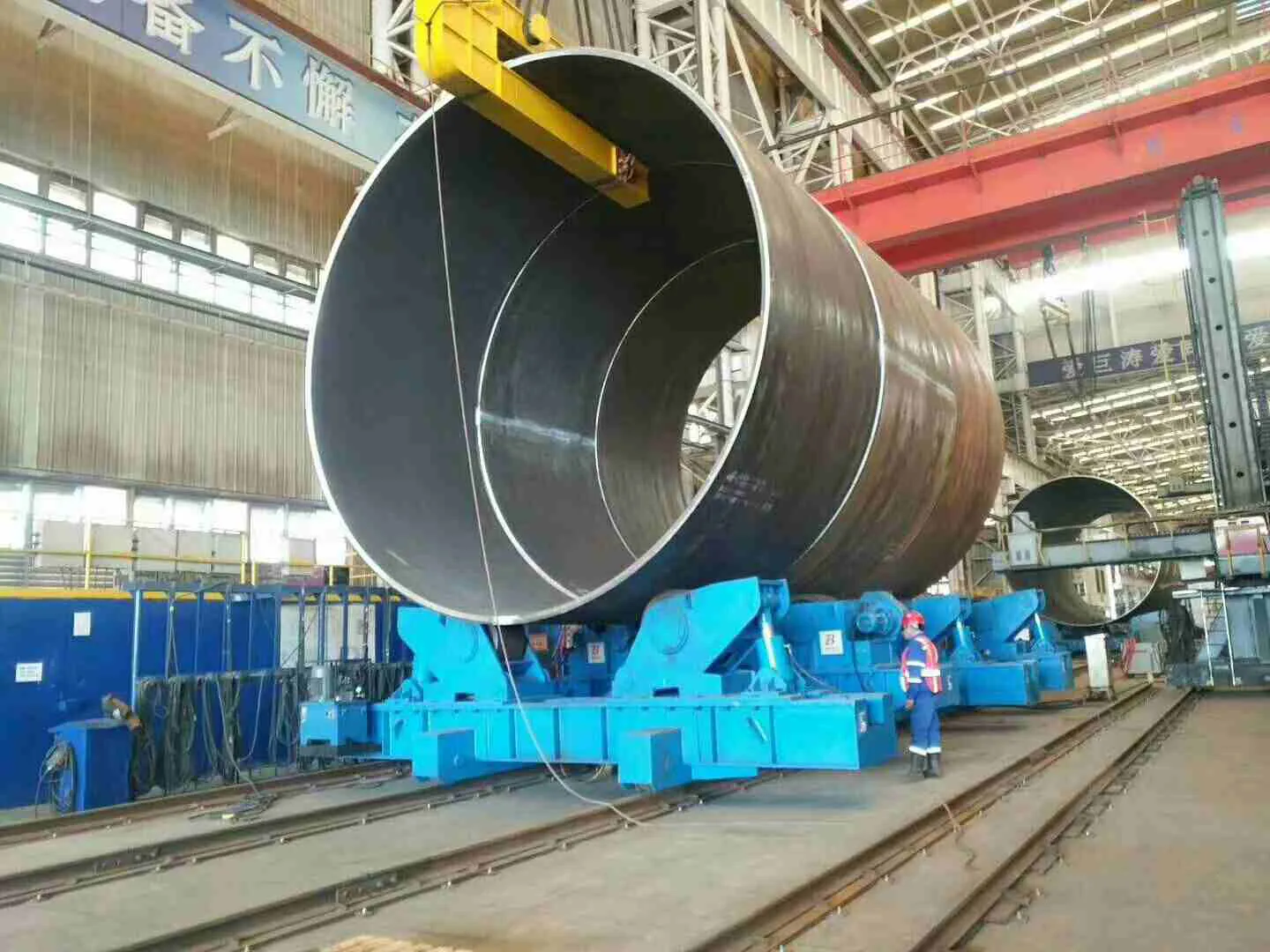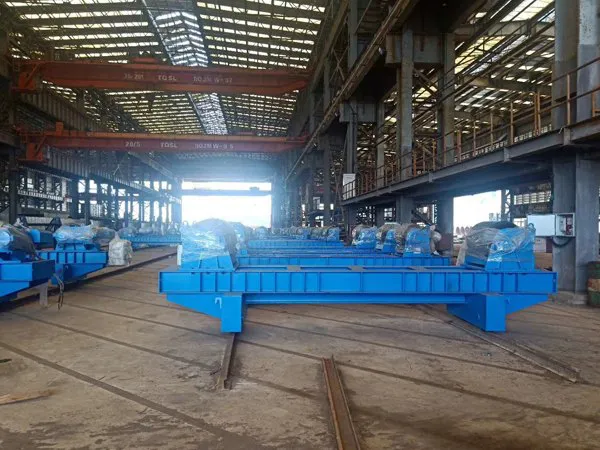With the global push toward sustainable energy, wind power generation has become an essentialpart of the renewable energy landscape. As the core structural component of a wind turbine, the wind turbine tower plays a vital role in overall performance and project timelines. Improving its manufacturing efficiency and welding quality has therefore become a top priority for manufacturers.
Among the advanced equipment used in modern production lines, the welding rotator (also known as a turning roll) stands out as a key solution that helps manufacturers boost productivity, enhance weld accuracy, and ensure worker safety during wind tower fabrication.

Producing wind turbine towers is a complex process that involves multiple large-scale fabrication and welding steps. Manufacturers often face several common challenges:
Massive size and weight: Wind turbine towers are long, heavy cylindrical structures.Traditional manual handling and positioning methods are inefficient and pose safety risks.
Strict welding quality requirements: Tower sections must withstand extreme wind loads. Even minor welding defects can cause severe structural issues.
Short production cycles: The growing global demand for renewable energy puts pressure on manufacturers to produce more towers in less time.
Labor-intensive operations: Manual rotation and alignment consume significant time and effort, increasing the likelihood of fatigue-related welding errors.
To overcome these challenges, manufacturers are increasingly turning to automated welding solutions, with the welding rotator becoming an indispensable part of modern tower fabrication lines.

A welding rotator is a specialized device designed to support and rotate cylindrical workpieces during welding. In wind tower manufacturing, its benefits are particularly evident:
1. Precise Positioning for Superior Weld Quality
Welding rotators allow the tower section to rotate smoothly and steadily, keeping the weld joint in the most favorable position for welding. This enables welders or automated welding systems to perform in a consistent flat or horizontal position,minimizing vertical and overhead welding.As a result, weld uniformity and penetration improve, while defects such as slag inclusion and lack of fusion are significantly reduced.
2.Seamless Automation Integration
Modern welding rotators can be easily integrated with SAW (Submerged Arc Welding),MIG/MAG, or other automated welding systems. Through programmable controls, the rotator automatically synchronizes with the welding machine to achieve precise rotation speed, alignment, and positioning. This level of automation drastically shortens the welding cycle of each tower section and ensures consistent weld quality across production batches.
3.Improved Safety and Reduced Labor Intensity
Handling and flipping large tower sections manually can be dangerous and exhausting.Welding rotators distribute the weight evenly across powered rollers, eliminating the need for risky manual intervention. This not only enhances workplace safety but also reduces operator fatigue, allowing workers to focus on monitoring welding performance and process control.
4. Strong Adaptability for Diverse Applications
Welding rotators are highly adaptable to different diameters, lengths, and weights of tower sections. Adjustable roller spacing and variable-speed drives make it easy to accommodate a wide range of workpieces. Some advanced models also include anti-creep mechanisms that keep the workpiece perfectly aligned during rotation, further improving weld precision and structural integrity.

As the manufacturing industry embraces Industry 4.0, welding rotators are evolving into intelligent and connected equipment.The integration of IoT sensors, AI algorithms, and real-time data analytics will enable next-generation rotators to self-adjust parameters,predict maintenance needs, and optimize welding performance automatically. These advancements will drive the wind tower fabrication process toward higher levels of automation, precision, and sustainability.
The welding rotator is more than just an auxiliary tool - it is a cornerstone of modern wind tower production. By enhancing welding accuracy, shortening production cycles, and improving workplace safety, it helps manufacturers achieve higher productivity and product quality.
For wind power equipment manufacturers striving for excellence, investing in advanced welding rotator systems is a strategic move toward greater efficiency, smarter production, and a stronger competitive edge in the renewable energy industry.
No. 1 Intersection of Chuangye Avenue and Weilai Avenue,
Yiyang County,Luoyang City, Henan Province, China
+86 400-0379-069
Copyright © 2023 An Automated Welding and Cutting Equipment Manufacturer Focusing on Welding Column Boom and Welding Rotator | All Rights Reserved Technical support: ShangXian